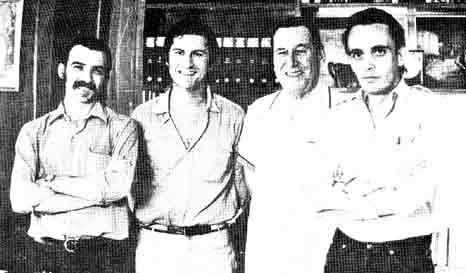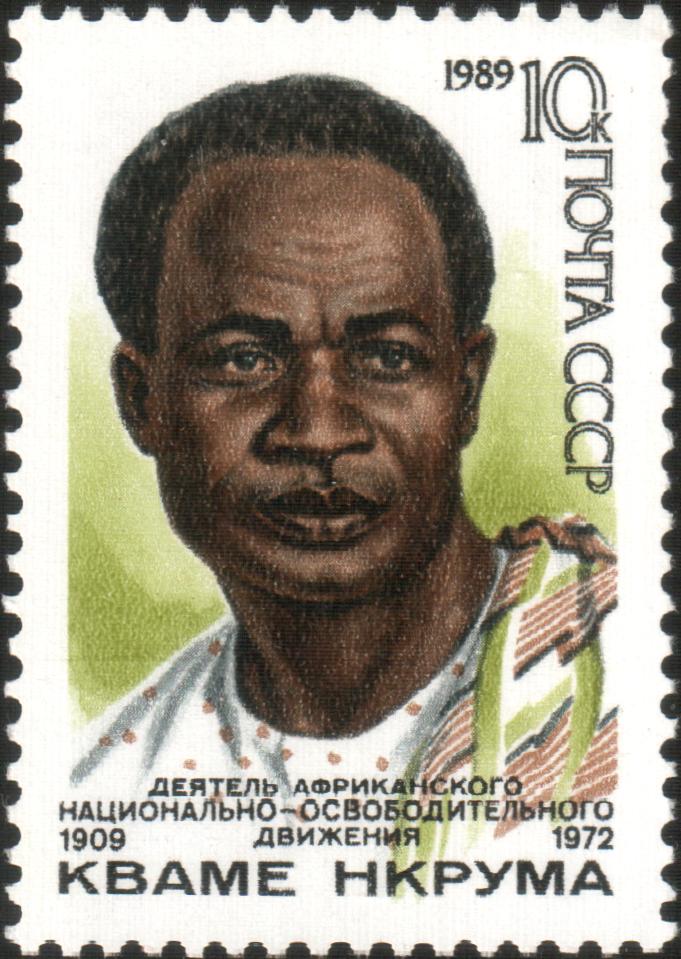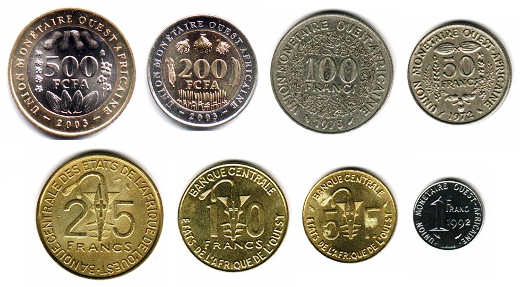|
Djibril Diop Mambéty
Djibril Diop Mambéty (January 1945 – July 23, 1998) was a Senegalese film director, actor, orator, composer and poet. Though he made only two feature films and five short films, they received international acclaim for their original and experimental cinematic technique and non-linear, unconventional narrative style. Born to a Muslim family near Dakar, Senegal's capital city, Mambéty was an ethnic Wolof. He died in 1998 while being treated for lung cancer in a Paris hospital. Biography Djibril Diop Mambéty was born in Colobane, Senegal, a town near Senegal's capital city of Dakar that he would feature prominently in some of his films. Mambéty was the son of a Muslim cleric and member of the Lebou tribe. Mambéty's interest in cinema began with theater. Having graduated from acting school in Senegal, Mambéty worked as a stage actor at the Daniel Sorano National Theater in Dakar until he was expelled for disciplinary reasons. In 1969, at age 23, without any formal trai ... [...More Info...] [...Related Items...] OR: [Wikipedia] [Google] [Baidu] |
Gueule Tapée-Fass-Colobane
Gueule Tapée-Fass-Colobane is a commune d'arrondissement of the city of Dakar, Senegal. As of 2013 it had a population of 52,270. Notable people *Djibril Diop Mambéty Djibril Diop Mambéty (January 1945 – July 23, 1998) was a Senegalese film director, actor, orator, composer and poet. Though he made only two feature films and five short films, they received international acclaim for their original and ex ... (1945-1998) - film director References Arrondissements of Dakar {{Senegal-geo-stub ... [...More Info...] [...Related Items...] OR: [Wikipedia] [Google] [Baidu] |
Hyenas
Hyenas, or hyaenas (from Ancient Greek , ), are feliform carnivoran mammals of the family Hyaenidae . With only four extant species (each in its own genus), it is the fifth-smallest family in the Carnivora and one of the smallest in the class Mammalia. Despite their low diversity, hyenas are unique and vital components of most African ecosystems. Although phylogenetically closer to felines and viverrids, as part of suborder Feliformia, hyenas are behaviourally and morphologically similar to canids in several elements due to convergent evolution; both hyenas and canines are non-arboreal, cursorial hunters that catch prey with their teeth rather than claws. Both eat food quickly and may store it, and their calloused feet with large, blunt, nonretractable claws are adapted for running and making sharp turns. However, hyenas' grooming, scent marking, defecation habits, mating and parental behavior are consistent with the behavior of other feliforms. Hyenas feature prominentl ... [...More Info...] [...Related Items...] OR: [Wikipedia] [Google] [Baidu] |
Francophone
French became an international language in the Middle Ages, when the power of the Kingdom of France made it the second international language, alongside Latin. This status continued to grow into the 18th century, by which time French was the language of European diplomacy and international relations. According to the 2022 report of the Organisation internationale de la Francophonie (OIF), 409 million people speak French. The OIF states that despite a decline in the number of learners of French in Europe, the overall number of speakers is rising, largely because of its presence in African countries: of the 212 million who use French daily, 54.7% are living in Africa. The OIF figures have been contested as being inflated due to the methodology used and its overly broad definition of the word francophone. According to the authors of a 2017 book on the world distribution of the French language, a credible estimate of the number of "francophones réels" (real francophones), that ... [...More Info...] [...Related Items...] OR: [Wikipedia] [Google] [Baidu] |
Third Cinema
Third Cinema ( es, Tercer Cine) is a Latin American film movement that started in the 1960s–70s which decries neocolonialism, the capitalist system, and the Hollywood model of cinema as mere entertainment to make money. The term was coined in the manifesto ''Hacia un tercer cine'' (''Toward a Third Cinema''), written in the late 1960s by Argentine filmmakers Fernando Solanas and Octavio Getino, members of the '' Grupo Cine Liberación'' and published in 1969 in the cinema journal '' Tricontinental'' by the OSPAAAL (Organization of Solidarity with the People of Asia, Africa and Latin America). Definition Solanas and Getino's manifesto considers 'First Cinema' to be the Hollywood production model that idealizes bourgeois values to a passive audience through escapist spectacle and individual characters. 'Second Cinema' is the European art film, which rejects Hollywood conventions but is centred on the individual expression of the auteur director. Third Cinema is meant to be non-com ... [...More Info...] [...Related Items...] OR: [Wikipedia] [Google] [Baidu] |
Souleymane Cissé (film Director)
Souleymane Cissé (born April 21, 1940) is a Malian film director, regarded as one of the first generation of African filmmakers. He has been called "Africa's greatest living filmmaker" while his film ''Yeelen'' has been called "conceivably the greatest African film ever made." Biography Born in Bamako and raised in a Muslim family, Souleymane Cissé was a passionate cinephile from childhood. He attended secondary school in Dakar and returned to Mali in 1960 after national independence. His film career began as an assistant projectionist for a documentary on the arrest of Patrice Lumumba. This triggered his desire to create films of his own, and he obtained a scholarship at the Gerasimov Institute of Cinematography, the Moscow school of Cinema and Television. In 1970 he returned to Mali, and joined the Ministry of Information as a cameraman, where he produced documentaries and short films. Two years later, he produced his first medium-length film, ''Cinq jours d’une vie'' (''Fi ... [...More Info...] [...Related Items...] OR: [Wikipedia] [Google] [Baidu] |
Ousmane Sembène
Ousmane Sembène (; 1 January 1923 or 8 January 1923 – 9 June 2007), often credited in the French style as Sembène Ousmane in articles and reference works, was a Senegalese film director, producer and writer. The ''Los Angeles Times'' considered him one of the greatest authors of Africa and he has often been called the "father of African film". Descended from a Serer family through his mother from the line of Matar Sène, Ousmane Sembène was particularly drawn to Serer religious festivals especially the ''Tuur festival''. Gadjigo, Samba, "Ousmane Sembène: The Making of a Militant Artist", Indiana University Press, (2010), p 16,(Retrieved : 10 August 2012) Early life The son of a fisherman, Ousmane Sembène was born in Ziguinchor in Casamance to a Lebou family. From childhood he was exposed to the Serer religion especially the ''Tuur festival'', in which he was made "cult servant". Although the ''Tuur'' demands offerings of curdled milk to the ancestral spirits (Pangool), S ... [...More Info...] [...Related Items...] OR: [Wikipedia] [Google] [Baidu] |
Neocolonialism
Neocolonialism is the continuation or reimposition of imperialist rule by a state (usually, a former colonial power) over another nominally independent state (usually, a former colony). Neocolonialism takes the form of economic imperialism, globalization, cultural imperialism and conditional aid to influence or control a developing country instead of the previous colonial methods of direct military control or indirect political control (hegemony). Neocolonialism differs from standard globalisation and development aid in that it typically results in a relationship of dependence, subservience, or financial obligation towards the neocolonialist nation. This may result in an undue degree of political control or spiraling debt obligations, functionally imitating the relationship of traditional colonialism. Neocolonialism frequently affects all levels of society, creating neo-colonial systems that disadvantage local communities, such as neo-colonial science. Coined by the French p ... [...More Info...] [...Related Items...] OR: [Wikipedia] [Google] [Baidu] |
Hybridity
Hybridity, in its most basic sense, refers to mixture. The term originates from biology and was subsequently employed in linguistics and in racial theory in the nineteenth century. Young, Robert. ''Colonial Desire: Hybridity in Theory, Culture and Race'', 1995, Putnam, . Its contemporary uses are scattered across numerous academic disciplines and is salient in popular culture.pp.106-136. Hutnyk, John. ‘Adorno at Womad: South Asian crossovers and the limits of hybridity-talk’, in ''Debating Cultural Hybridity'', ed. by Tariq Modood and Pnina Werbner, 1997, Zed Books, . Hybridity is used in discourses about race, postcolonialism, identity, anti-racism and multiculturalism, and globalization, developed from its roots as a biological term. In biology As racial mixing Hybridity is a cross between two separate races, plants or cultures. A hybrid is something that is mixed, and hybridity is simply mixture. Hybridity is not a new cultural or historical phenomenon. It has been a feat ... [...More Info...] [...Related Items...] OR: [Wikipedia] [Google] [Baidu] |
The New York Times
''The New York Times'' (''the Times'', ''NYT'', or the Gray Lady) is a daily newspaper based in New York City with a worldwide readership reported in 2020 to comprise a declining 840,000 paid print subscribers, and a growing 6 million paid digital subscribers. It also is a producer of popular podcasts such as '' The Daily''. Founded in 1851 by Henry Jarvis Raymond and George Jones, it was initially published by Raymond, Jones & Company. The ''Times'' has won 132 Pulitzer Prizes, the most of any newspaper, and has long been regarded as a national " newspaper of record". For print it is ranked 18th in the world by circulation and 3rd in the U.S. The paper is owned by the New York Times Company, which is publicly traded. It has been governed by the Sulzberger family since 1896, through a dual-class share structure after its shares became publicly traded. A. G. Sulzberger, the paper's publisher and the company's chairman, is the fifth generation of the family to head the pa ... [...More Info...] [...Related Items...] OR: [Wikipedia] [Google] [Baidu] |
Village Voice
''The Village Voice'' is an American news and culture paper, known for being the country's first alternative newsweekly. Founded in 1955 by Dan Wolf, Ed Fancher, John Wilcock, and Norman Mailer, the ''Voice'' began as a platform for the creative community of New York City. It ceased publication in 2017, although its online archives remained accessible. After an ownership change, the ''Voice'' reappeared in print as a quarterly in April 2021. Over its 63 years of publication, ''The Village Voice'' received three Pulitzer Prizes, the National Press Foundation Award, and the George Polk Award. ''The Village Voice'' hosted a variety of writers and artists, including writer Ezra Pound, cartoonist Lynda Barry, artist Greg Tate, and film critics Andrew Sarris, Jonas Mekas and J. Hoberman. In October 2015, ''The Village Voice'' changed ownership and severed all ties with former parent company Voice Media Group (VMG). The ''Voice'' announced on August 22, 2017, that it would cease pu ... [...More Info...] [...Related Items...] OR: [Wikipedia] [Google] [Baidu] |
Street Children
Street children are poor or homeless children who live on the streets of a city, town, or village. Homeless youth are often called street kids or street child; the definition of street children is contested, but many practitioners and policymakers use UNICEF's concept of boys and girls, aged under 18 years, for whom "the street" (including unoccupied dwellings and wasteland) has become home and/or their source of livelihood, and who are inadequately protected or supervised. Street girls are sometimes called gamines, a term that is also used for Colombian street children of either sex. Some street children, notably in more developed nations, are part of a subcategory called thrown-away children, consisting of children who have been forced to leave home. Thrown-away children are more likely to come from single-parent homes. Street children are often subject to abuse, neglect, exploitation, or, in extreme cases, murder by "clean-up squads" that have been hired by local busines ... [...More Info...] [...Related Items...] OR: [Wikipedia] [Google] [Baidu] |
CFA Franc
The CFA franc (french: franc CFA, , Franc of the Financial Community of Africa, originally Franc of the French Colonies in Africa, or colloquially ; abbreviation: F.CFA) is the name of two currencies, the West African CFA franc, used in eight West African countries, and the Central African CFA franc, used in six Central African countries. Although separate, the two CFA franc currencies have always been at parity and are effectively interchangeable. The ISO currency codes are XAF for the Central African CFA franc and XOF for the West African CFA franc. On 22 December 2019, it was announced that the West African currency would be reformed and replaced by an independent currency to be called Eco. Both CFA francs have a fixed exchange rate to the euro: 100 CFA francs = 1 French franc = €0.152449; or €1 = F 6.55957 = F.CFA 655.957 exactly. Usage CFA francs are used in fourteen countries: twelve nations formerly ruled by France in West and Central Africa (excludin ... [...More Info...] [...Related Items...] OR: [Wikipedia] [Google] [Baidu] |




.png)

